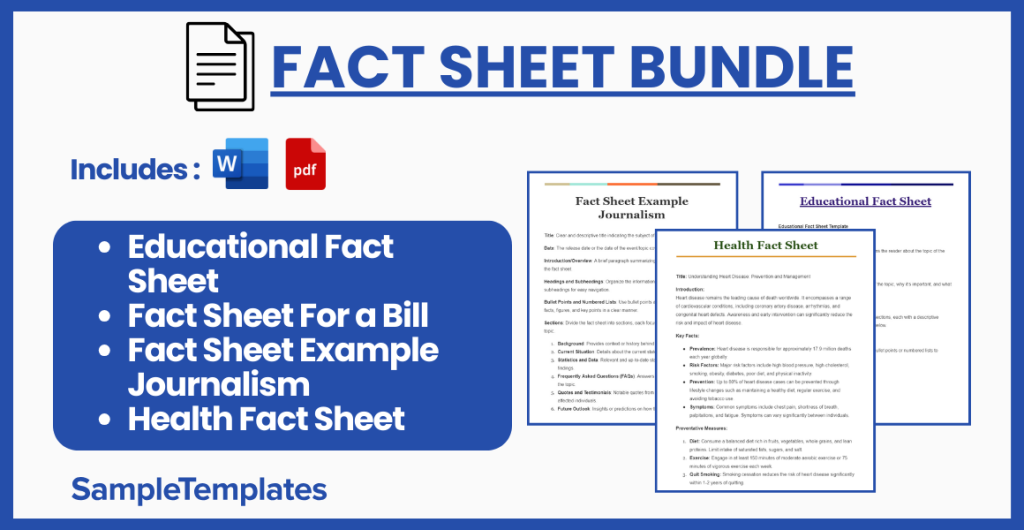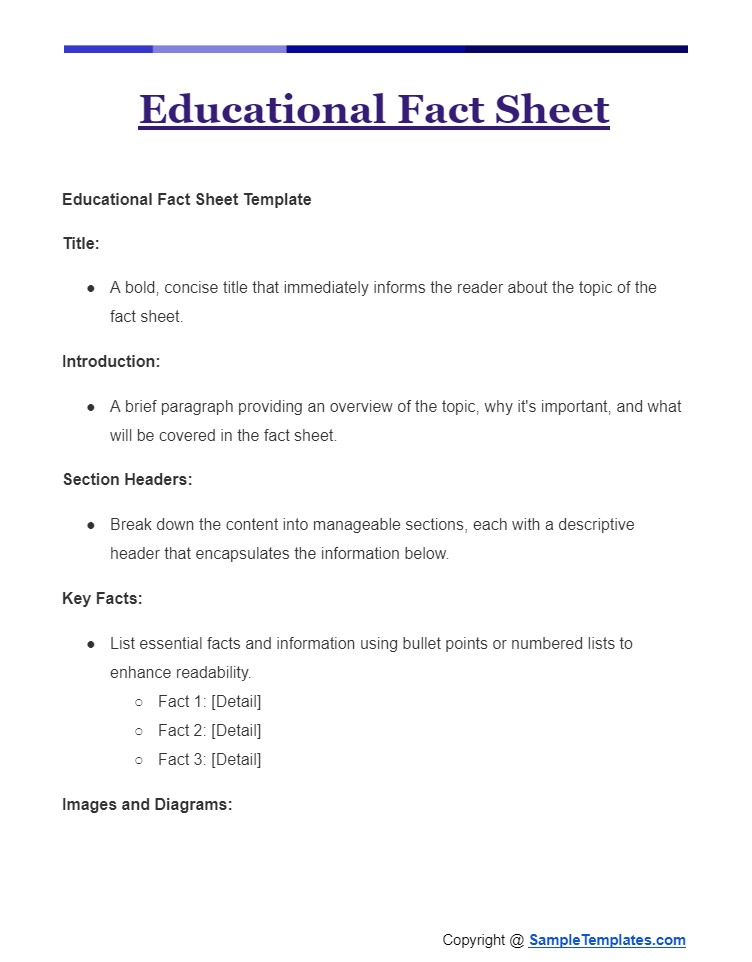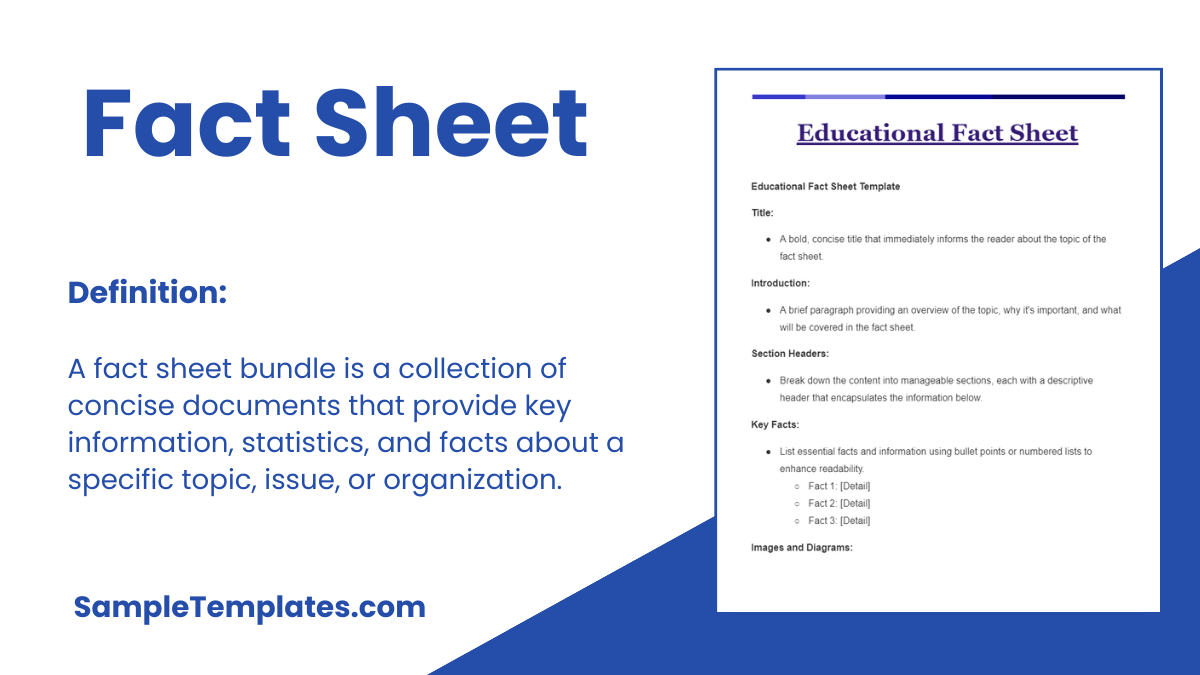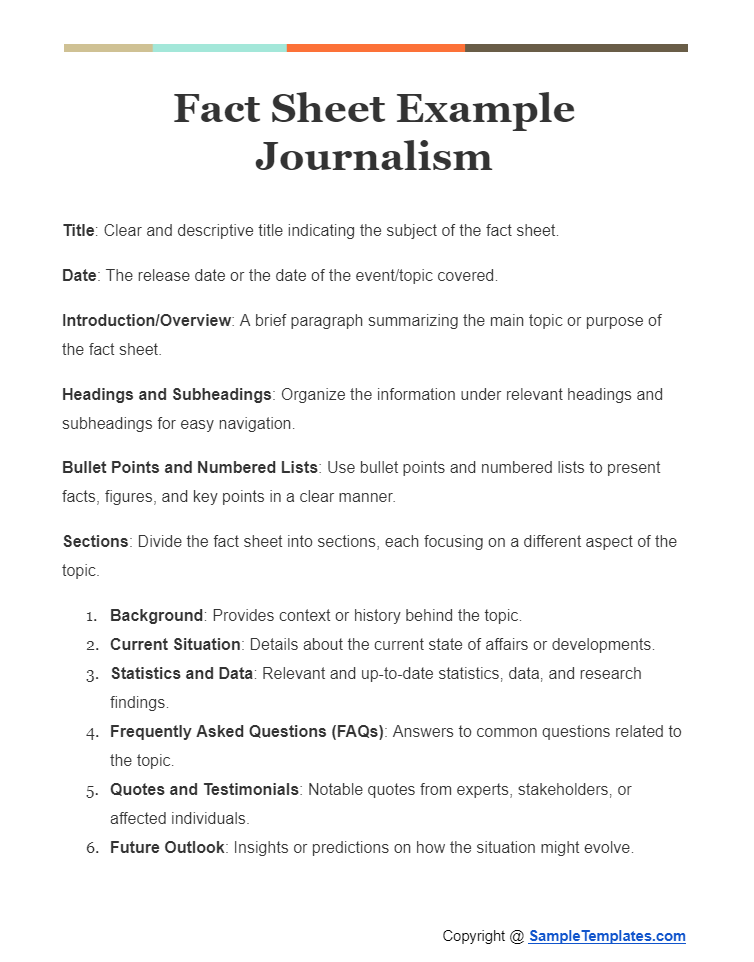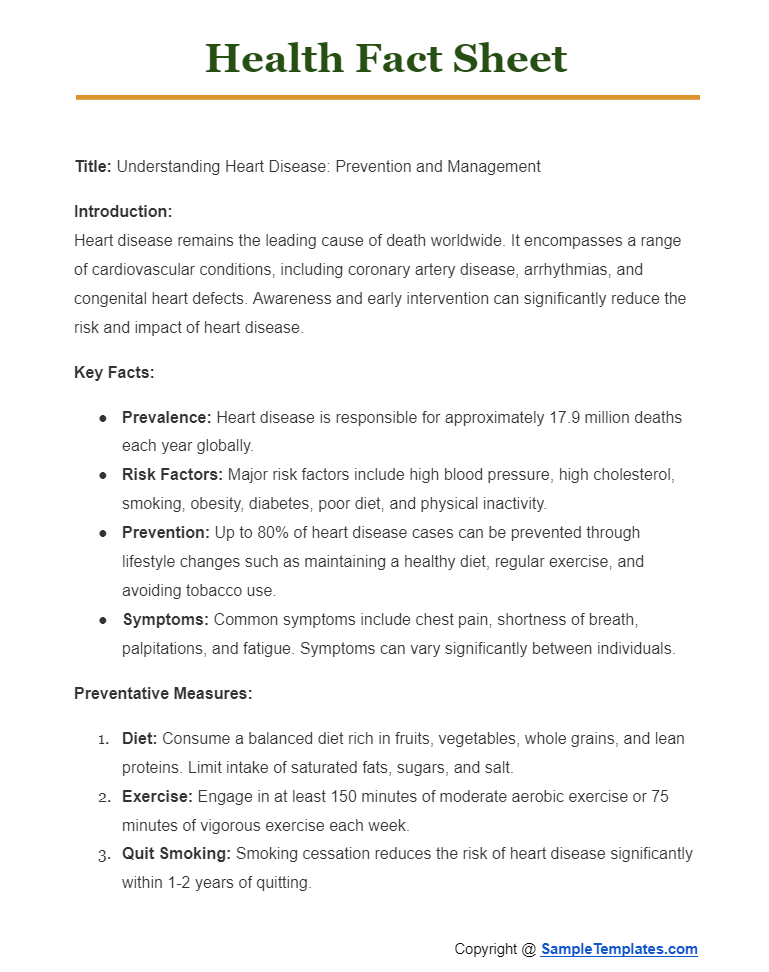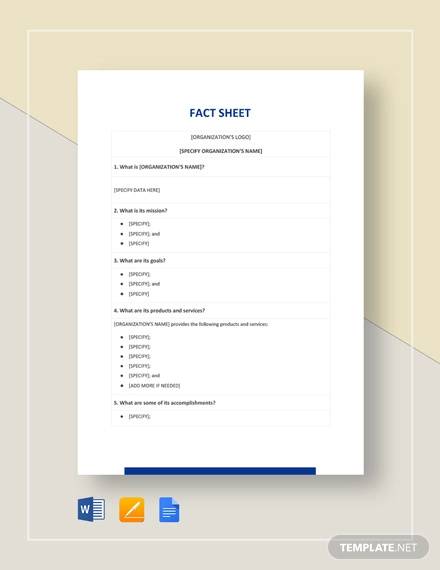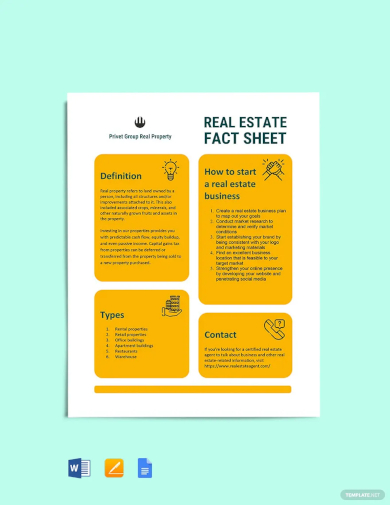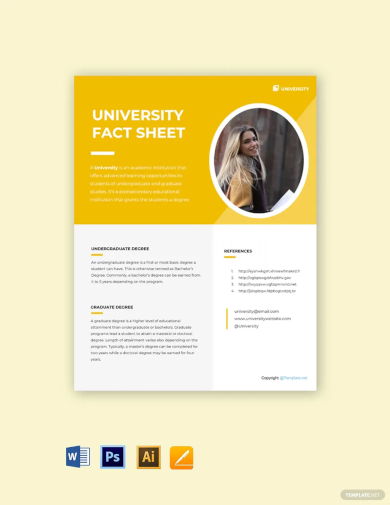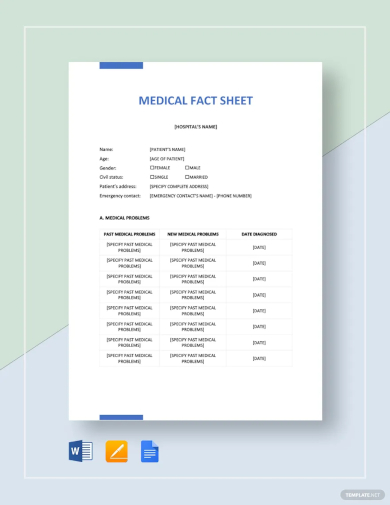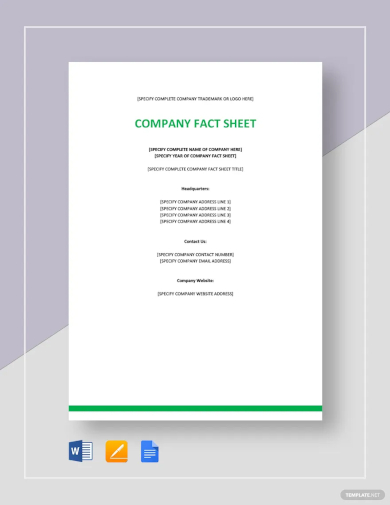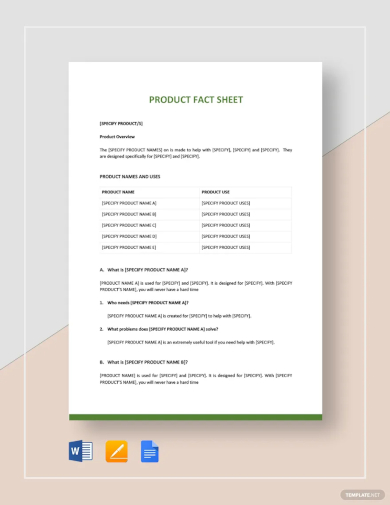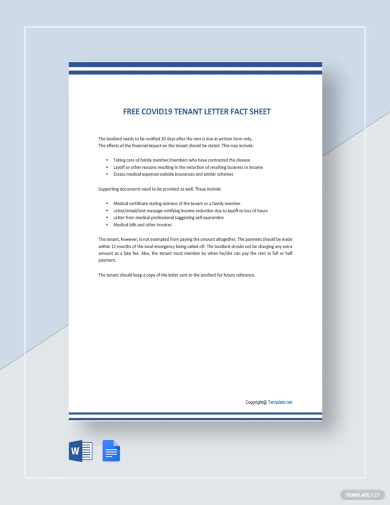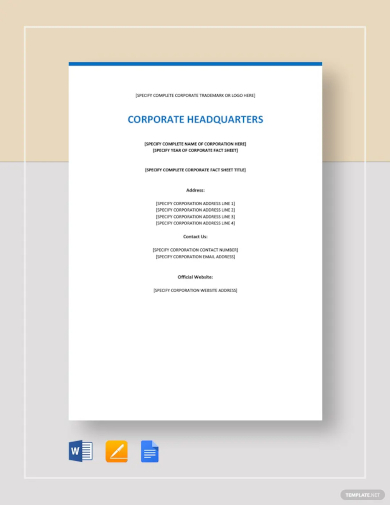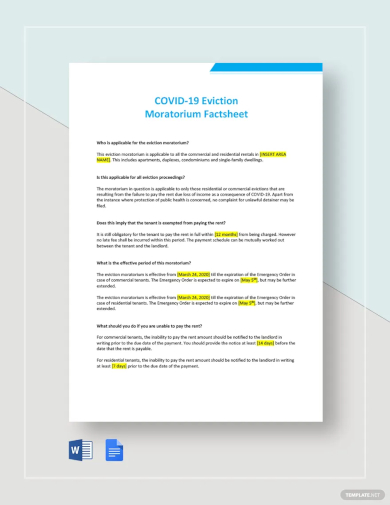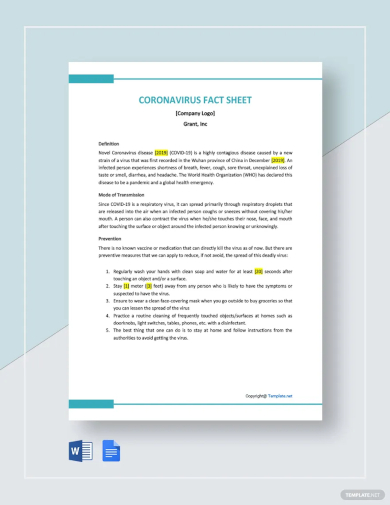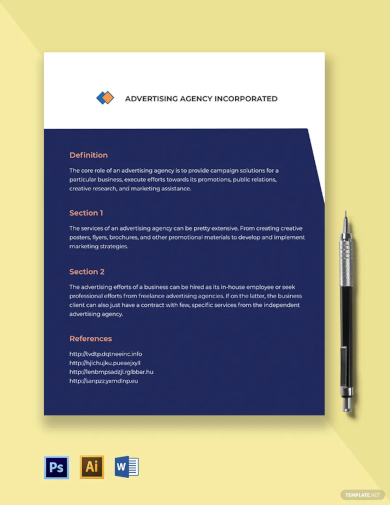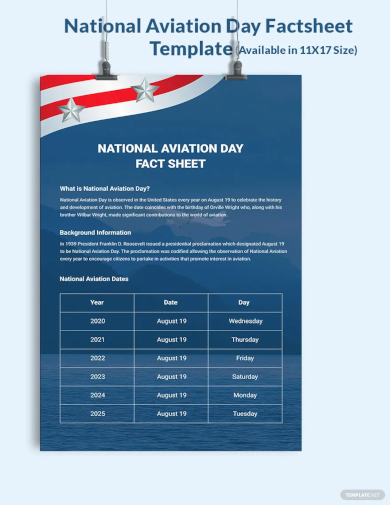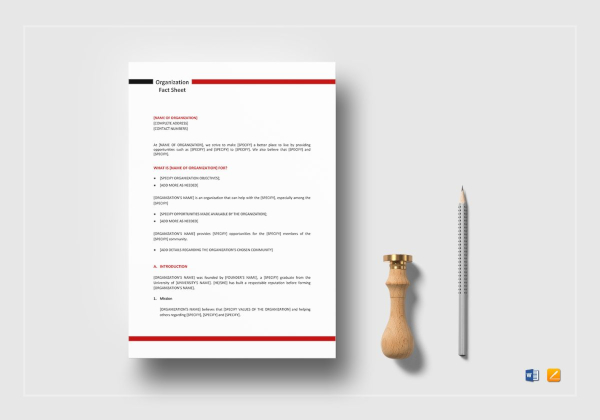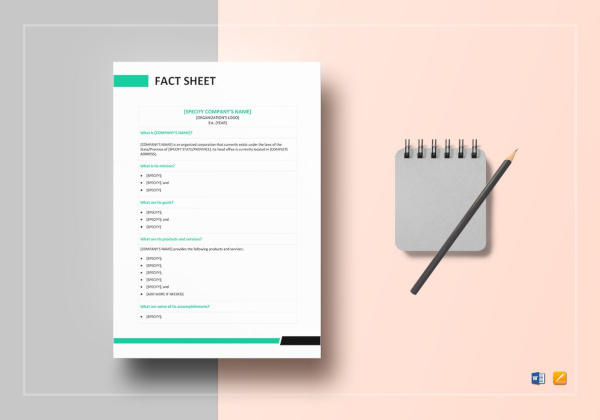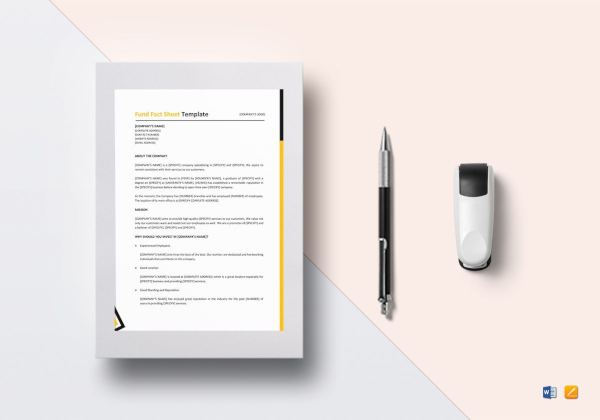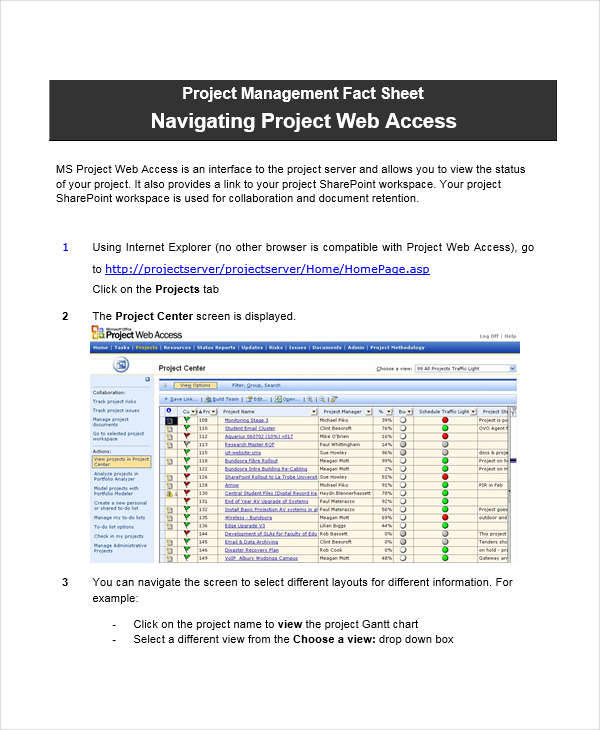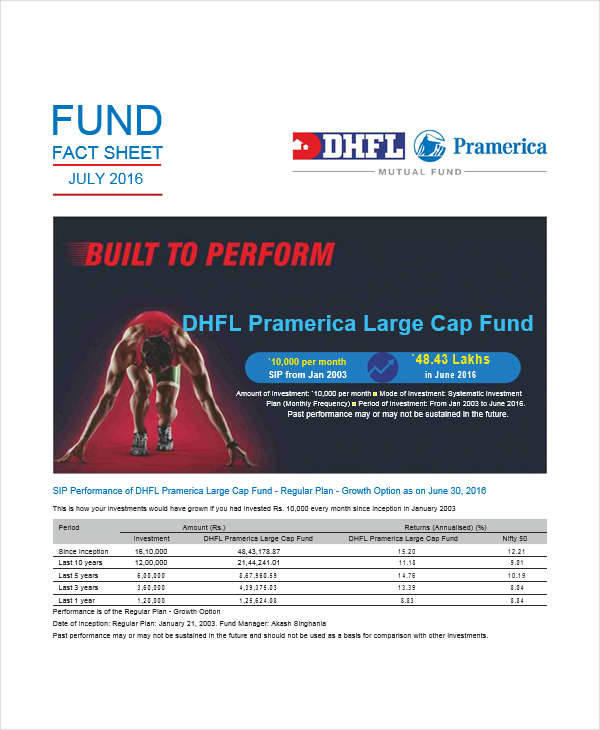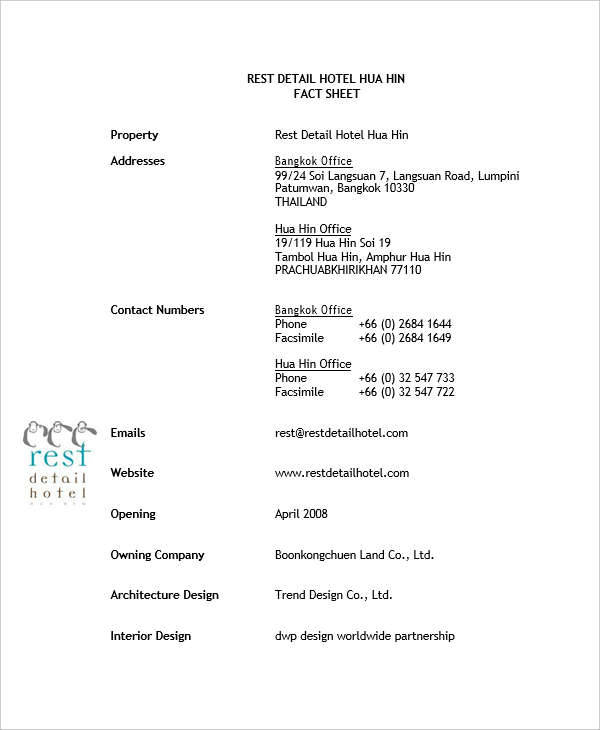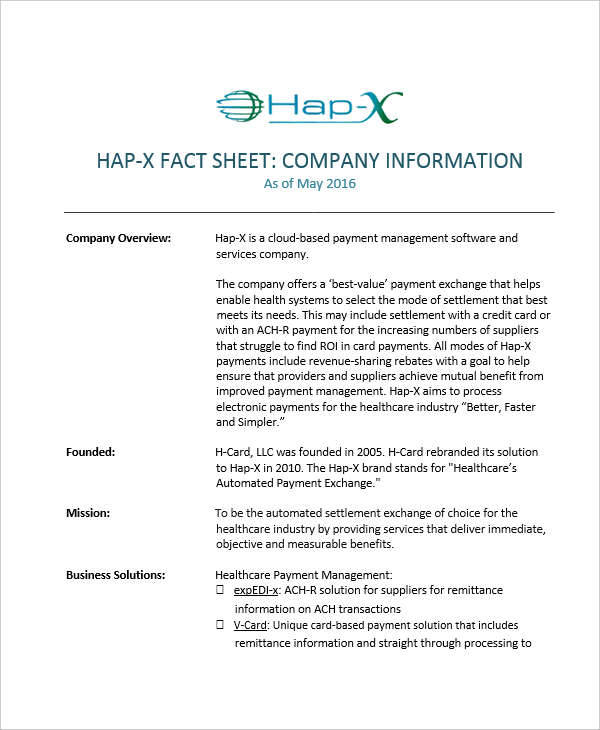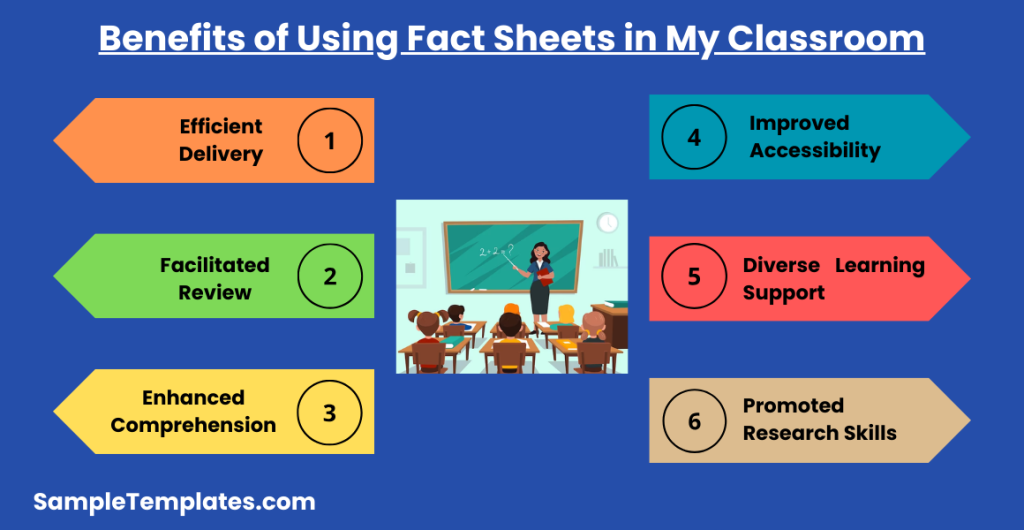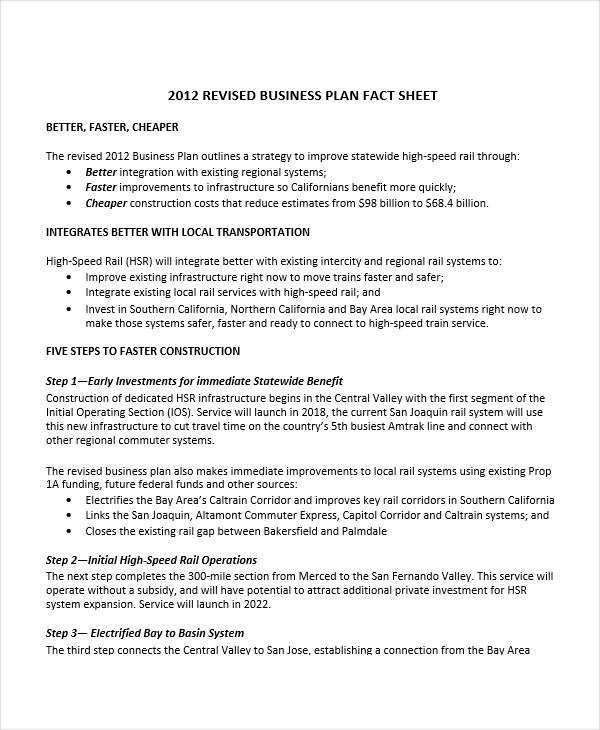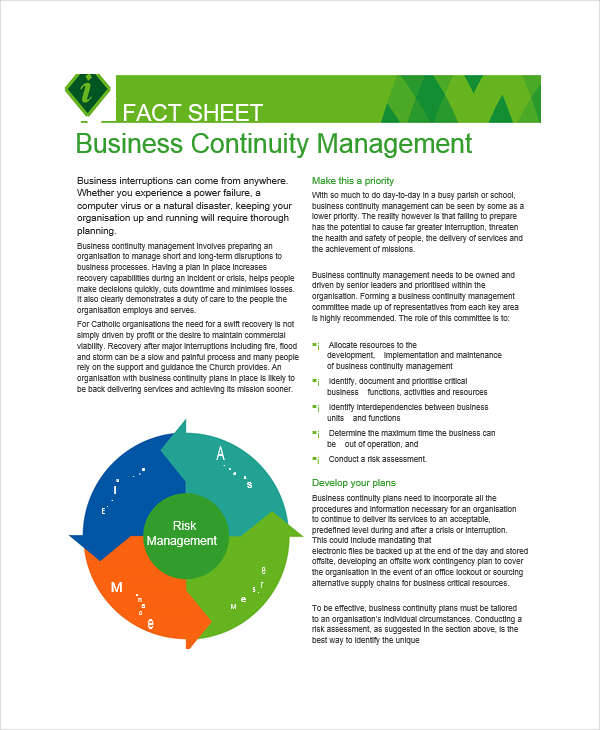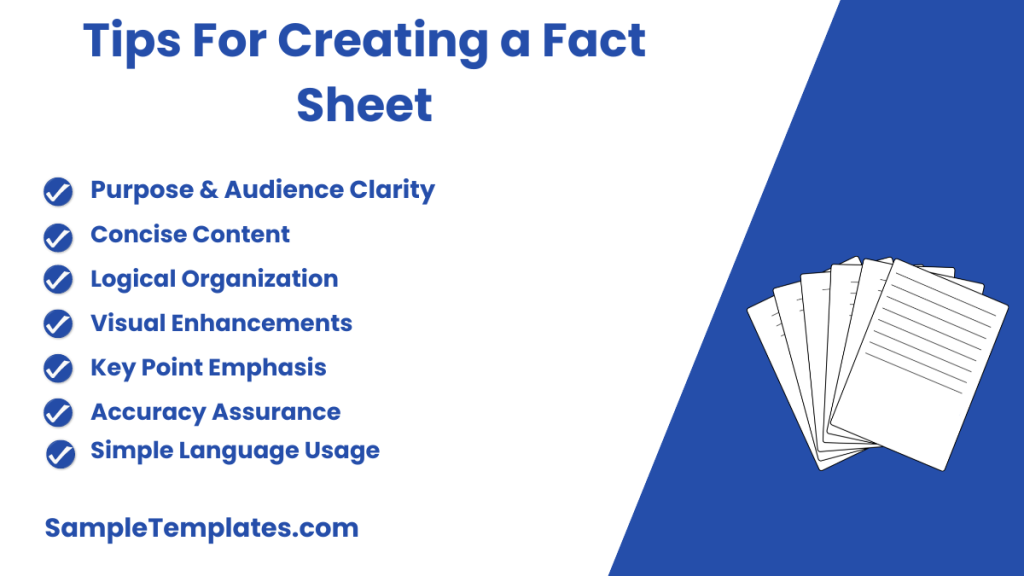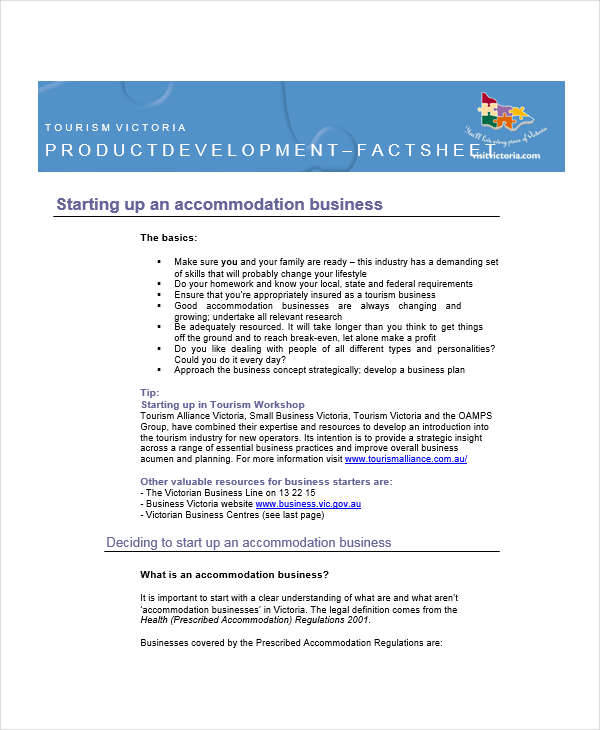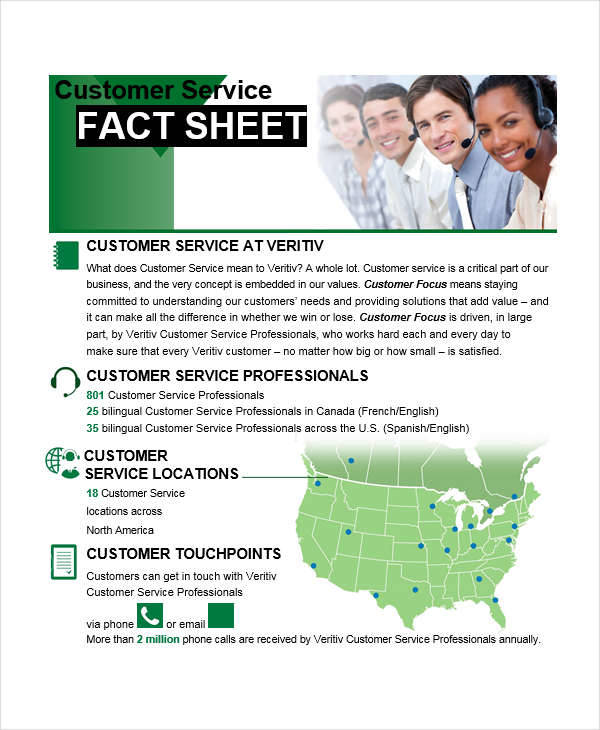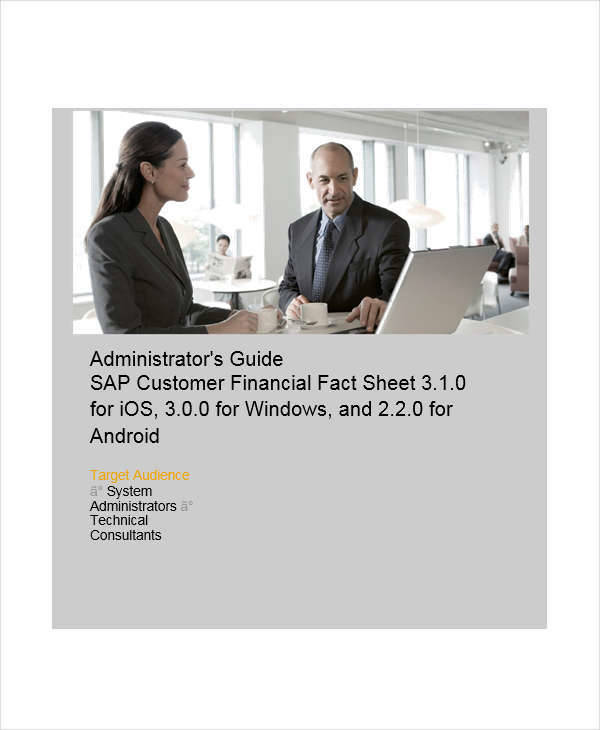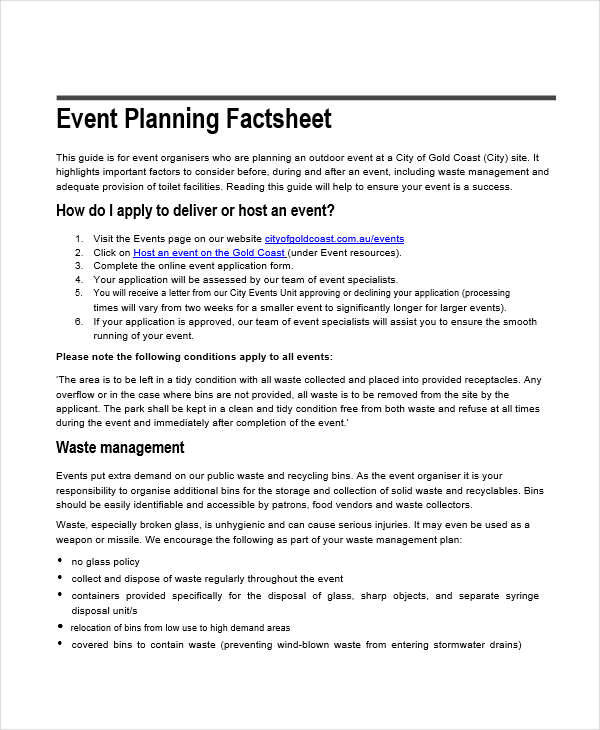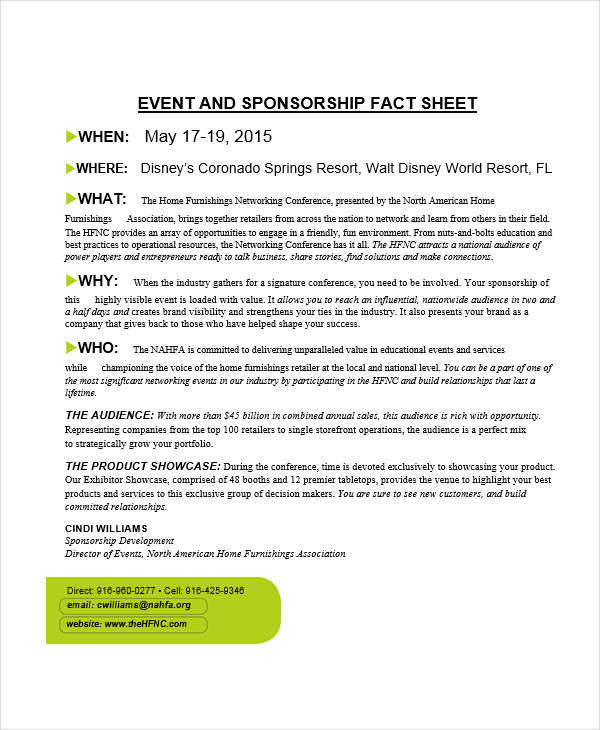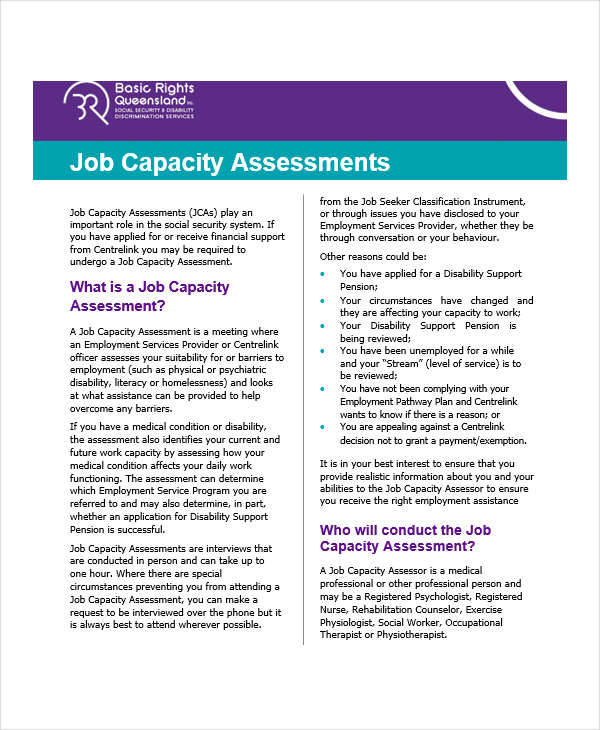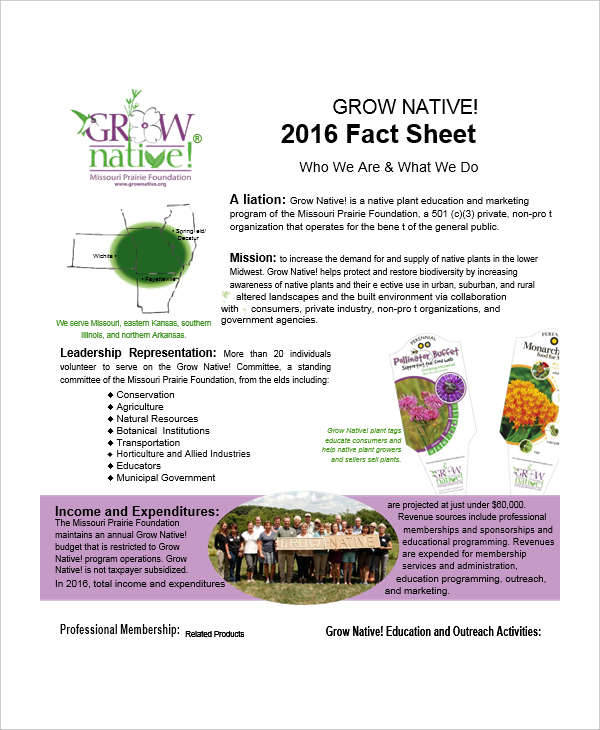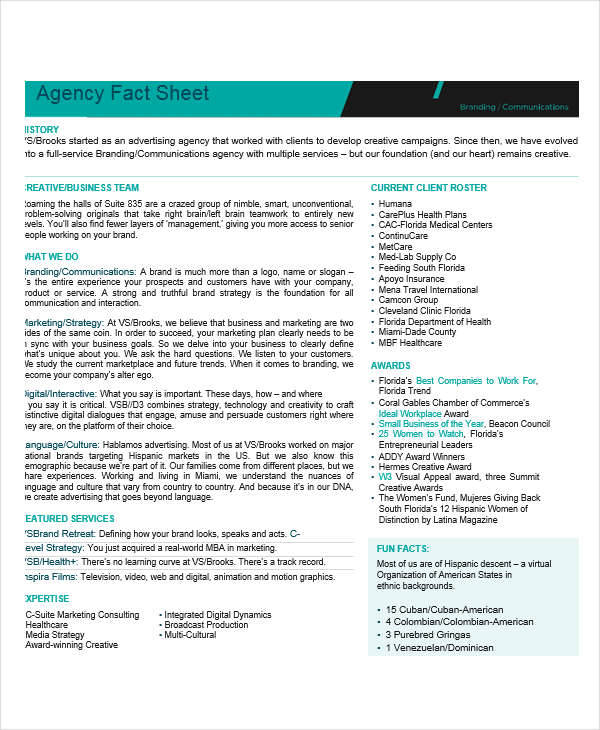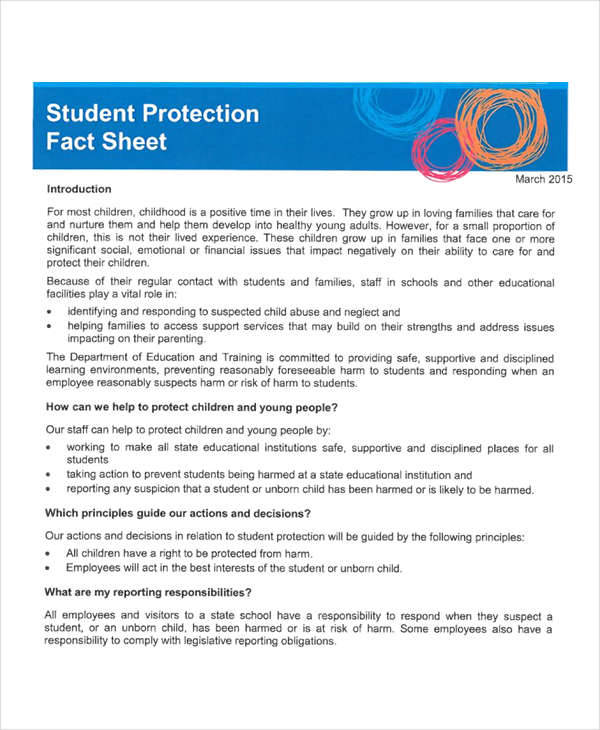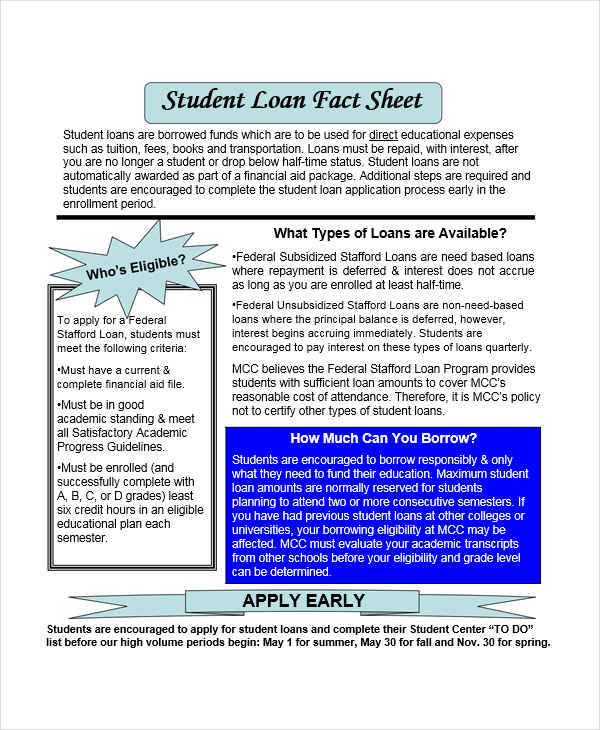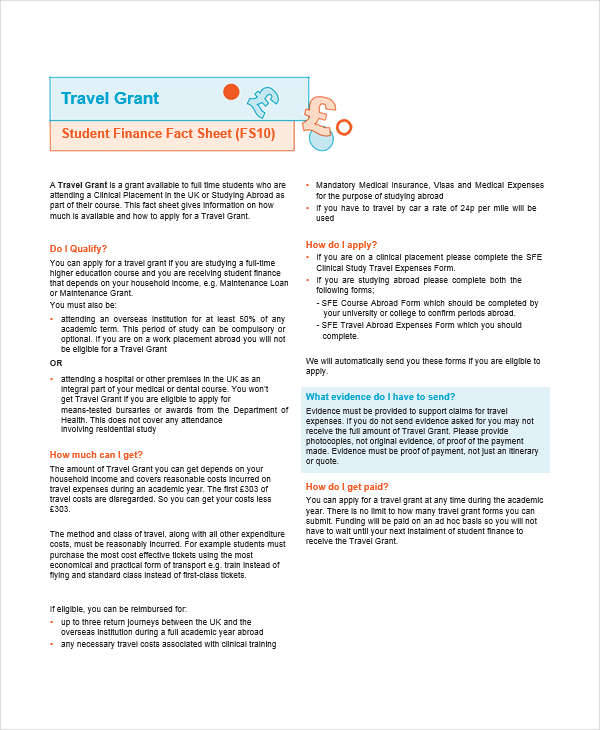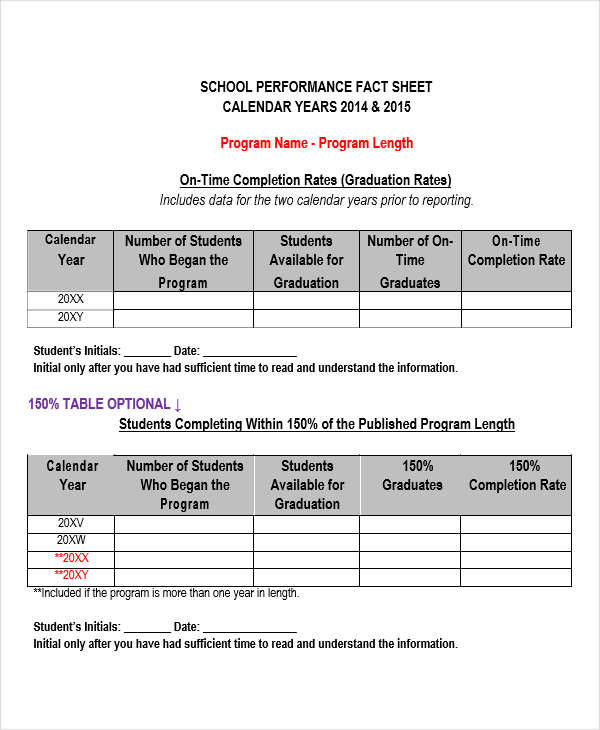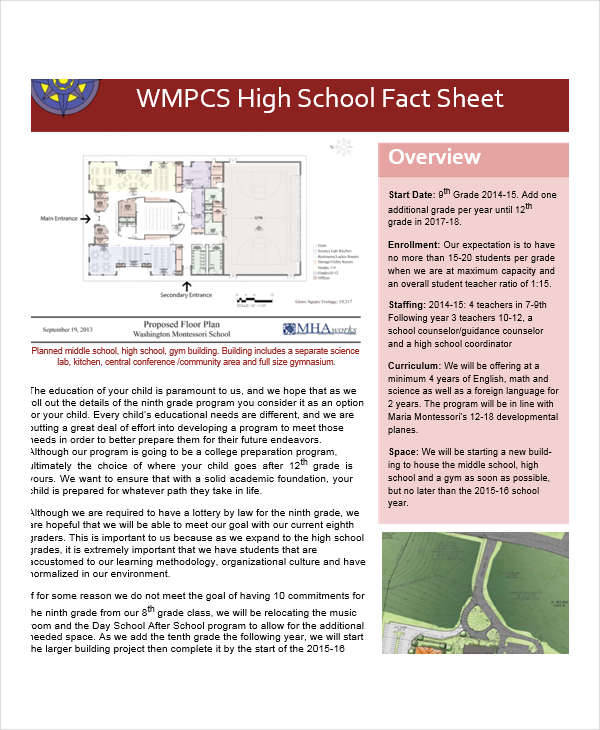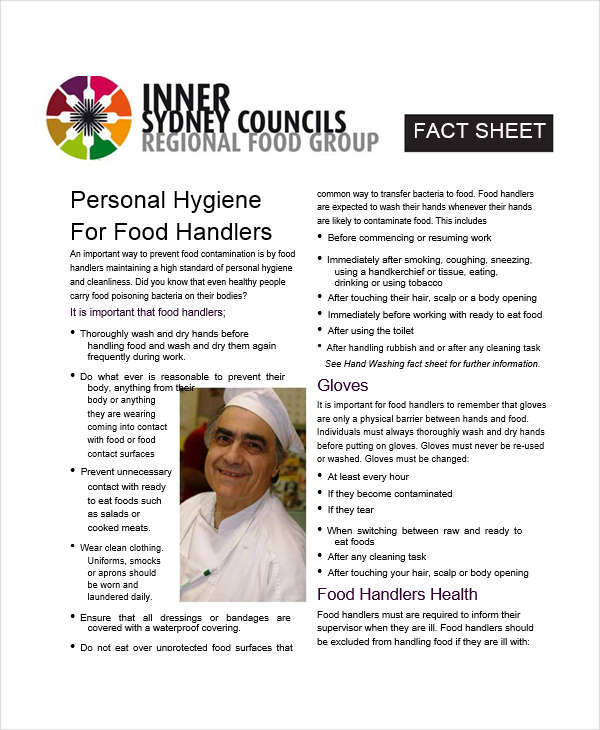Title: Clear and descriptive title indicating the subject of the fact sheet.
Date: The release date or the date of the event/topic covered.
Introduction/Overview: A brief paragraph summarizing the main topic or purpose of the fact sheet.
Headings and Subheadings: Organize the information under relevant headings and subheadings for easy navigation.
Bullet Points and Numbered Lists: Use bullet points and numbered lists to present facts, figures, and key points in a clear manner.
Sections: Divide the fact sheet into sections, each focusing on a different aspect of the topic.
- Background: Provides context or history behind the topic.
- Current Situation: Details about the current state of affairs or developments.
- Statistics and Data: Relevant and up-to-date statistics, data, and research findings.
- Frequently Asked Questions (FAQs): Answers to common questions related to the topic.
- Quotes and Testimonials: Notable quotes from experts, stakeholders, or affected individuals.
- Future Outlook: Insights or predictions on how the situation might evolve.
- Contact Information: Details of the organization or individual releasing the fact sheet, including name, phone number, email, and website for further inquiries.
Visual Elements:
- Charts and Graphs: To represent statistical data or trends visually.
- Images: Relevant photographs or illustrations to complement the text.
- Infographics: A combination of graphics and information to explain complex data succinctly.
Conclusion: A closing section that summarizes the key points or calls to action.
Best Practices
- Accuracy: Ensure all facts, figures, and statements are accurate and verifiable.
- Brevity: Keep the information concise and to the point.
- Clarity: Use clear and straightforward language to ensure the information is understandable to a broad audience.
- Update Regularly: Keep the fact sheet updated with the latest information and data.
- Accessibility: Design the fact sheet to be accessible, with easy-to-read fonts and colors that consider readers with visual impairments.
Conclusion
Fact sheets are an essential tool in journalism for providing a quick and thorough understanding of complex issues. By following a clear and organized format, journalists can effectively communicate important information to their audience, supporting informed public discourse.
Health Fact Sheet
Title: Understanding Heart Disease: Prevention and Management
Introduction:
Heart disease remains the leading cause of death worldwide. It encompasses a range of cardiovascular conditions, including coronary artery disease, arrhythmias, and congenital heart defects. Awareness and early intervention can significantly reduce the risk and impact of heart disease.
Key Facts:
- Prevalence: Heart disease is responsible for approximately 17.9 million deaths each year globally.
- Risk Factors: Major risk factors include high blood pressure, high cholesterol, smoking, obesity, diabetes, poor diet, and physical inactivity.
- Prevention: Up to 80% of heart disease cases can be prevented through lifestyle changes such as maintaining a healthy diet, regular exercise, and avoiding tobacco use.
- Symptoms: Common symptoms include chest pain, shortness of breath, palpitations, and fatigue. Symptoms can vary significantly between individuals.
Preventative Measures:
- Diet: Consume a balanced diet rich in fruits, vegetables, whole grains, and lean proteins. Limit intake of saturated fats, sugars, and salt.
- Exercise: Engage in at least 150 minutes of moderate aerobic exercise or 75 minutes of vigorous exercise each week.
- Quit Smoking: Smoking cessation reduces the risk of heart disease significantly within 1-2 years of quitting.
- Regular Check-ups: Early detection through regular health screenings for blood pressure, cholesterol, and diabetes is crucial.
Management:
- Medication: Various medications can manage heart disease symptoms and risk factors, including statins, beta-blockers, and ACE inhibitors.
- Surgery and Procedures: In advanced cases, surgical options such as angioplasty, stent placement, or bypass surgery may be necessary.
- Lifestyle Adjustments: Alongside medical treatment, lifestyle modifications are essential for managing heart disease.
Resources:
- American Heart Association (www.heart.org): Offers comprehensive information on heart disease prevention and management.
- Centers for Disease Control and Prevention (www.cdc.gov): Provides statistics, prevention tips, and treatment information.
Conclusion:
Heart disease poses a significant health challenge, but with informed prevention strategies and effective management, individuals can lead healthier, longer lives. Awareness and action are key to combating this global issue.
Contact Information:
For more information, please contact [Local Health Department Contact Information].
Browse More Templates On Fact Sheet
Blank Fact Sheet Template
Real Estate Fact Sheet Template
University Fact Sheet Template
Sample Medical Fact Sheet Template
Company Fact Sheet Template
Basic Product Fact Sheet Template
Coronavirus COVID19 Tenant Letter Fact Sheet Template
Sample Freelance Fact Sheet Template
Corporate Fact Sheet Template
Free Coronavirus COVID-19 Eviction Moratorium Factsheet Template
Coronavirus Fact Sheet Template
Advertising Agency Fact Sheet Template
Free National Aviation Day Factsheet Template
Organization Fact Sheet Template
Business Fact Sheet Template
Fund Fact Sheet Template
Project Fact Sheets Template
Construction Project Template
Project Management Template
Fund Fact Sheets Template
Mutual Fund Sheet Template
What Is a Personal Fact Sheet?
A personal fact sheet is a sample brief summary of important information about an individual. These important information include their basic information, like an individual’s name, age, religion, and so on. Also included is the individual’s work history and experience, their educational background, skills, abilities, and characteristics. If you have tried making a resume or filled out an application form, then you should be familiar with the personal fact sheet template. They are used the same way as resumes are used.
How to Write a Fact Sheet Template
There are free fact sheet templates available for download online and some come in different formats. There are also some that are already printed and sold in bookstores. That being said, we have relied on those sources. So here is a little know-how on how to write a fact sheet template.
- Select the paper size and set the margin.
- Choose related but catchy picture for your fact sheet. If it is catchy and nice, a lot of people ill surely read it.
- Organize the important information on which one comes first and which one is last.
- Choose a layout for your fact sheet. Arrange it in a way that is easy to read and understand.
- Double-check for any spelling or grammatical errors.
Hotel Fact Sheets Template
Hotel Property Template
Rest Detail Hotel Fact Sheet Template
Company Fact Sheets Template
Company Overview Template
Company Information Template
Benefits of Using Fact Sheets in My Classroom
Using fact sheets in the classroom offers a variety of benefits for both teachers and students. These concise, informative documents can enhance learning and teaching experiences in several impactful ways:
1. Efficient Information Delivery
- Fact sheets condense complex information into digestible, key points. This efficiency aids students in quickly grasping essential concepts, terms, and data, making learning more accessible.
2. Enhances Comprehension
- The structured and summarized nature of fact sheets helps students understand and retain information more effectively. This is particularly beneficial for visual learners who can benefit from the layout and organization.
3. Supports Diverse Learning Styles
- Fact sheets can be designed with various elements like text, images, charts, and bullet points, catering to different learning styles. They can be used alongside traditional teaching methods to support a wider range of learners.
4. Encourages Engagement
- Students often find visually appealing and concise materials more engaging than lengthy texts. Fact sheets can spark interest and curiosity about a topic, encouraging further exploration.
5. Facilitates Review and Revision
- Fact sheets serve as excellent revision materials. They provide a quick reference guide for students to review key points before tests or exams, helping reinforce learning and memory retention.
6. Aids in Classroom Management
- By providing clear and concise information, fact sheets can help manage classroom time more effectively. They allow for more interactive and discussion-based learning, as students have the foundational information readily available.
7. Promotes Research and Critical Thinking Skills
- Creating fact sheets can be a part of classroom assignments, encouraging students to research, summarize, and distill information critically. This process helps develop research skills and the ability to identify key points in a broader context.
8. Increases Accessibility of Information
- Fact sheets can be easily distributed in print or digital formats, ensuring all students have access to the material. They can also be made available for students who were absent or need additional resources for study.
9. Supports Inclusive Education
- By providing information in a clear, organized, and simplified manner, fact sheets can be particularly beneficial for students with learning difficulties, ensuring that educational content is accessible to everyone.
10. Facilitates Cross-Curricular Learning
- Fact sheets can be used to integrate information from different subjects, promoting a more holistic understanding of how concepts interrelate across disciplines.
Incorporating fact sheets into classroom activities not only enriches the learning experience but also equips students with materials that support their academic journey inside and outside the classroom.
Business Fact Sheets Example
Revised Business Plan Template
Business Continuity Management Template
Business Information Centres Template
Tips For Creating a Fact Sheet
Creating a fact sheet is an effective way to summarize key points about a business, product, project, or event in a concise and visually appealing format. Here are some tips to help you craft an informative and engaging fact sheet:
1. Define Your Purpose and Audience
- Start by clarifying the main objective of your fact sheet. Are you aiming to inform, persuade, or provide a quick reference? Also, consider your target audience’s needs and interests to tailor your content accordingly.
2. Keep It Concise
- A fact sheet should be succinct, focusing on the most important and relevant information. Aim for brevity, using bullet points, short paragraphs, and clear headings to organize your content.
3. Use a Logical Structure
- Organize your information in a logical flow. Begin with the most critical information, followed by supporting details. Common structures include chronological, problem-solution, and category-based formats.
4. Incorporate Visual Elements
- Enhance readability and engagement by including visual elements like charts, graphs, images, and icons. Visuals can help illustrate points, break up text, and draw attention to key information.
5. Highlight Key Points
- Use formatting tools like bold text, color, and larger fonts to emphasize important facts, figures, and takeaways. This visual hierarchy helps readers scan the document and quickly find essential information.
6. Ensure Accuracy
- Verify all the facts, statistics, and information included in your fact sheet. Accurate and up-to-date information builds credibility and trust with your audience.
7. Use Simple Language
- Avoid jargon, technical terms, and complex language. Aim for clarity and simplicity to ensure your fact sheet is accessible and understandable to a broad audience.
8. Include Contact Information
- Always provide contact details or links for readers who wish to learn more or have specific inquiries. This might include a website, email address, phone number, or social media profiles.
9. Professional Design
- Maintain a professional and consistent design that aligns with your brand or the theme of your project. Use your brand’s color scheme, fonts, and logo to reinforce identity and recognition.
10. Proofread and Edit
- Carefully review your fact sheet for spelling, grammar, and punctuation errors. Consider getting feedback from colleagues or stakeholders to ensure the document is clear and effective.
11. Test Its Effectiveness
- If possible, test the fact sheet with a small segment of your target audience to gauge its clarity, impact, and effectiveness. Use the feedback to make any necessary adjustments.
Creating a fact sheet involves balancing informative content with a clear, accessible design to effectively communicate your key messages. By following these tips, you can produce a fact sheet that serves as a valuable tool for your audience.
Product Fact Sheets Template
Software Product Template
Product Development Template
Customer Fact Sheets Template
Customer Service Template
Customer Financial Template
Standard Event Fact Sheets Template
Event Planning Template
Event and Sponsorship Template
Formal Job Fact Sheet Template
Job Capacity Assessment Template
What Is Fact Sheet of a Company?
A fact sheet of a company contains information about the company itself, their products and services, and many more facts about the company. Just like personal facts sheets, company fact sheets incur the company’s name, the president or the CEO of the company, the founder of the company, the business partners, the nature of the company’s business, their products and services, as well as information about how the company came to be. It is almost similar to a historical background but not. You can also check our Fact Sheet Examples.
How to Cite a Fact Sheet
Since fact sheets contain information that are proven to be true, they can be used as references list to a research, report, or presentation. There are many ways to cite a fact sheet. Here we will show you some ways on how to cite a fact sheet. We also have Sample Fact Sheet Templates.
- The author’s name for the fact sheet is the person or organization who compiled it.
- The title of the fact sheet is also what you will put on your citation, and not where the title of the thing where the fact came from.
- If your fact sheet is one of the many pages in a book review or magazine, you may follow the citation format for books or magazines.
Marketing Fact Sheets Template
One-Page Marketing Fact Sheet Template
Marketing Agency Template
Student Fact Sheets Format
Student Protection Template
Student Loan Template
Student Finance Template
School Fact Sheets Template
School Performance Template
High School Template
Personal Fact Sheets Template
Personal Leave Template
Personal Hygiene Template
Fact Sheet Format Guidelines
- Make your fact sheet readable. Use a font that is easy to read and a readable font size. Say for example, a Times New Roman font and font size 12.
- Have your information text short. Most people don’t read stuff written in big blocks of paragraph.
- If you have to write in paragraph form and it is really not avoidable, do so. But just make sure that the important stuff are on the very first paragraph.
- Do not assume that your reader knows about the other stuff that you are referring to in your fact sheet.
- Use simple terms and avoid jargon words. Not all readers have dictionaries on hand. Simple words can be easily understood.
- Try to use bullets instead of paragraphs.
- If the fact sheet is about a process that differs from one institution to the other, give a Web address, phone number, or email address that they can contact.
How do you complete a fact sheet?
To complete a fact sheet, define its purpose and audience, gather relevant information, organize it logically, incorporate visual elements, highlight key points, ensure accuracy, use simple language, include contact details, design professionally, proofread, and test effectiveness.
What is fact file example?
A fact file example could include information about a specific topic, such as a famous historical figure, a scientific concept, or a geographical location. It typically presents key facts, figures, and relevant details concisely.
What is a project fact sheet?
A project fact sheet is a concise document summarizing essential details about a project, including its objectives, scope, timeline, budget, and key stakeholders. It provides a quick overview for stakeholders and decision-makers.
Why use fact sheets?
Fact sheets are concise, informative documents that provide key information on a specific topic. They are used to communicate important details quickly and clearly, making complex information accessible and understandable to a wide audience.
In conclusion, fact sheets are invaluable tools for efficiently communicating essential information to a diverse audience. Their concise format, clear organization, and visual elements make them effective resources for informing, educating, and engaging readers.
You can also check Sample Sheets.
